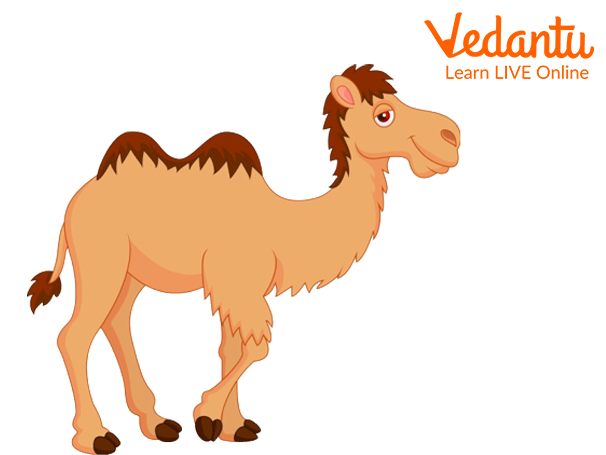




An Overview about Camels
Known as the ship of the desert, camels are peaceful animals. They live in a group called a herd and are social animals. They tend to stick together in the challenging terrains of a desert. They communicate with each other by making camel sounds. It is their language to express different types of emotions. Let us find out what kind of sounds a camel makes.
Camel: The Ship of the Desert
Every desert story will have a camel in it. Do you know why? Well, they are one of the handfuls of animals that can survive in the deserts. They can live in a terrain where surface water is almost unavailable across the year.
The desert is also quite big. Sand dunes and thorny bushes with a minimum or no water make it very hard to live and survive. Then, how do these big animals like camels survive? They live together to form a flock and walk for hours in search of food and water. It means they will have to talk to each other to make sure they are on the right track.
So, a camel will need to speak to the other camels in the herd. This is why a camel makes sounds. The camel sound name is a grunt. They make different types of noises but grunting and humming are the two most commonly used.
Types of Camel Sounds
Camels make different types of sounds to express their state of mind. It can be low-pitched or high-pitched considering the message it wants to send to fellow camels or any other animal. Here is a list of such sounds a camel makes.
Humming
This is a low-pitched sound that a camel makes when a calf communicates with its mother. This humming sound is also made by the mother out of love and care.

A Baby Camel
Bellows and Bleats
Camels bleat and bellow at a high pitch when they want to express distress. They also make such sounds when triggered in a group. This high-pitched sound is also produced when they are threatened. Such sounds are made as a signal or to show dominance. Experts also interpret such sounds made by submissive camels to show the acceptance of dominance.
Blowing
This sound is quite interesting. Camels often show their love for fellow camels by blowing on their faces. They inhale and make a low-pitched sound when they see a friend or a family member. They greet each other by making low-pitched sounds.
Grunting
The most common camel voice we hear is grunting. It often happens when a camel is resting and wants to rise. When it lifts its feet, it makes a sound. Standing up from a resting position takes time. It also takes time to lift weights that humans put on their saddles.

An Adult Camel
Camel Trivia
Now that we have learned the camel sound, let us learn a few facts about them.
Camels don’t pant like other animals.
A camel perspires very less to preserve water within its body.
A camel’s hump is not meant to store water but to store fat for energy.
A camel stores water in its bloodstream.
They can drink as much as 75 litres of water at a time. Whenever they get a source of water, they drink it as much as possible and store it for the future.
Tips for Parents
Show camel pictures and explain the long neck and hump. Show how a camel’s feet are different from other animals and ideal for the terrains of a desert. Use audio files to help kids understand the different sounds made by a camel.
FAQs on Camel Sound: Types and Definitions | Learn with Examples for Kids
1. How does a camel hum?
It uses the soft tissues in its throat to make low and high-pitched humming sounds. It inhales air and pushes it through the mouth and nose to make such sounds for different purposes.
2. Why do camels make sounds while standing from a resting position?
Camels, when standing up from a resting position, make a humming sound as they have to give more effort. Their long legs need to unfold and take more time than most animals.
3. Why do camels grunt most of the time?
They either communicate with other camels or express distress when other animals and humans come closer to them.















